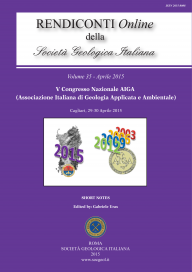
Hydrogeological features of a highly fractured rock-slab
Margherita Cecilia Spreafico (a), Federico Cervi (a), Vincent Marc (b) & Lisa Borgatti (a)
(a) DICAM – Department of Civil, Chemical, Environmental and Materials Engineering – Alma Mater Studiorum, Università di Bologna, Bologna, Italy. Corresponding Author: federico.cervi2@unibo.it
(b) Université d'Avignon et des Pays de Vaucluse, EMMAH UMR1114 INRA-UAPV, Avignon, France
Volume: 35/2015
Pages: 283-287
Abstract
In many geological contexts, the hydrogeological features of highly fractured rock slabs can drive slope instability processes. This is the case of San Leo (northern Apennines of Italy), where groundwater processes were recognized as predisposing factor for the last large-scale rock fall that took place the 27th of February 2014. In the present work, the hydrogeological features of the San Leo slab were analyzed by means of spring-discharge analysis, piezometric monitoring data and slug tests. The maximum spring yield, the depletion coefficient and the hydraulic conductivity values were estimated. Time-series analyses were used to better understand the groundwater behavior within the rock slab and to estimate its response to rainfall regime. Moreover, the calculation of the groundwater flow direction and modulus in the unsaturated zone was performed. Results highlight the presence of two systems, which are probably related to the characteristics of different joint sets (aperture, spacing); the hydraulic conductivity values were shown to vary with depth. A first general interpretation of the aquifer behavior is given, which is related to the main structural elements of the slab.
Keywords
Get Full Text